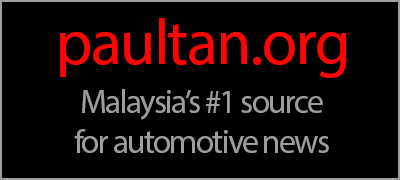The Proton eMas 5 was launched back in October, yet all the cars we have seen since then have been of the Premium, not the base-spec Prime. That changes today – Regal Motors in Petaling Jaya had one of the few early units of the entry-level model, so we headed over to shoot the photos you see here.
Firstly, the Prime represents a significant saving over the Premium – priced at RM56,800 inclusive of the RM3,000 launch rebate, it costs RM13,000 less than its longer-range sibling. That money buys you a car that, from the outside at least, doesn’t look a whole lot different, but you are getting a significantly lesser vehicle under the skin.
While the rear motor (and multilink rear suspension, non-existent elsewhere in this price range) remains, its outputs have dropped by 27 PS (37 kW) and 20 Nm to just 79 PS (58 kW) and 130 Nm, meaning that even the zero to 50 km/h sprint takes half a second longer at 4.4 seconds. This being an electric vehicle, however, that should still be enough for daily use.
Of more consequence is the CATL LFP battery’s capacity, which shrinks from 40.16 kWh to 30.12 kWh. That has the effect of reducing range from an already modest 325 km to just 225 km, making this car really only suitable for city driving.
It does at least still DC fast charge from 30 to 80% in the same 21 minutes, despite having a much lower speed of 58 kW. And thanks to it offering the same 6.6 kW of AC charging, the Prime takes a whole hour and a half less to charge from 10 to 100%, at 4.3 hours.
Beyond the mechanicals, the Prime looks very similar to the Premium, still with the same cutesy rounded design. Unlike in China, the base model here still gets chrome vertical front bumper corner trims, in addition to the single slat on the intake.
The sweptback headlights still come with projectors and look identical when turned off, but they are now manual halogen instead of auto LED units – this even extends to the daytime running lights, which occupy one of the three vertical “slats” where the indicators would be on the Premium. Rather amusingly, the lamps feature the “Classic Tech” script instead of “Full LED Tech.”
You also get 15-inch steel wheels instead of 16-inch alloys, with two-tone hubcaps in a new three-petal design instead of the four-petal look shown in a previous thumbnail image. This is similar to what is currently offered on the Geely Xingyuan in China as part of the 2026 model year update, as well as in other markets as the EX2. The tyres are the same Linglong Comfort Master rollers as the Premium in a 205/65 R15 size.
As for colours, the Prime is only available in Moonstone White, Graphite Silver and Slate Grey. You can’t spec the car in Marble Cream or Quartz Rose, and you also don’t get the Premium’s black roof. This extends to the inside, where Flint Grey is your only colour option – no Alabaster White here.
Discounting that, the cabin is again much the same as the Premium – you’ll have to dig into the details to find out what’s different. The essentials are all there, most important of which being the 8.8-inch digital instrument display and the massive 14.6-inch infotainment touchscreen, the latter featuring the latest Atlas operating system with a Bahasa Malaysia option for the “Hi Proton” voice control, as well as wireless Apple CarPlay and Android Auto.
Other standard features include keyless entry and start, faux leather upholstery, rear air-con vents, 20 litres of rear under-seat storage, a vehicle-to-load (V2L) function and a gas strut-suspended bonnet that opens up to a 70 litre front boot. You’ll have to look closely to spot the full-black (no two-tone) urethane steering wheel, the lack of a rear USB-A port and the manual tailgate.
The Prime also comes with only four speakers rather than six, but the deleted speakers are not where you’d expect them to be. You still get the two tweeters up front – instead, it’s the rear door speakers that have been removed. That may not be such a bad thing, given that these cars will likely carry only one or two occupants on a daily basis. Also fitted is a simple reverse camera in lieu of a 360-degree setup.
Less good is the lack of advanced driver assists such as autonomous emergency braking, adaptive cruise control with stop and go, lane departure warning and traffic sign recognition, which are exclusive to the Premium. Not exactly surprising, given the Prime’s low price, but it’s disappointing nevertheless.
This omission is made more obvious through the completely blank left steering wheel spoke, as the cruise control’s speed and distance controls have been removed. You do at least get blind spot monitoring, rear cross traffic alert, rear collision warning and a door opening warning, along with standard six airbags and stability control.
GALLERY: Proton eMas 5 Premium












































































































































































































































































































































































































































































































































































































